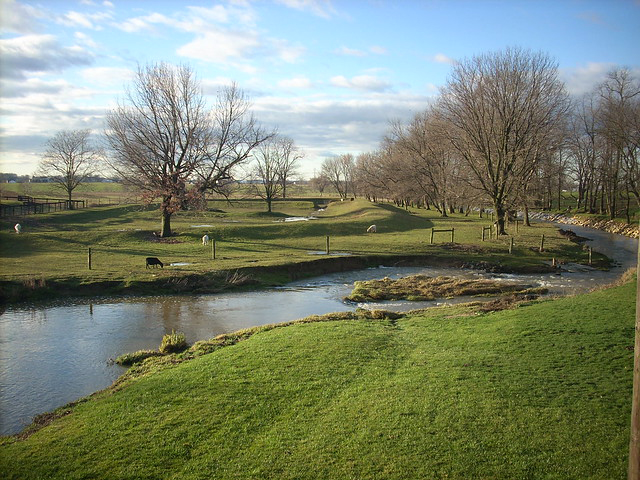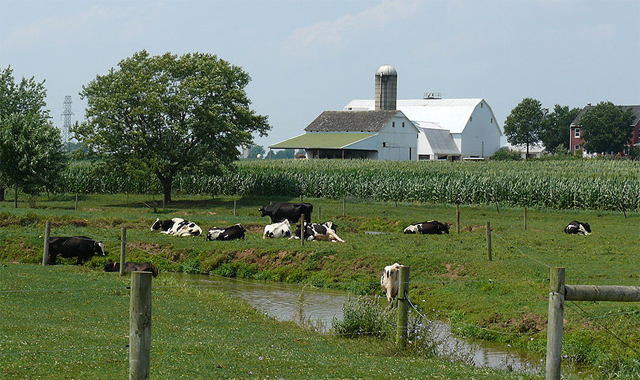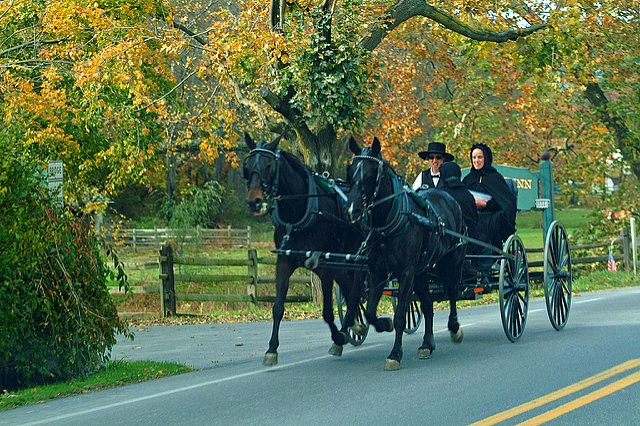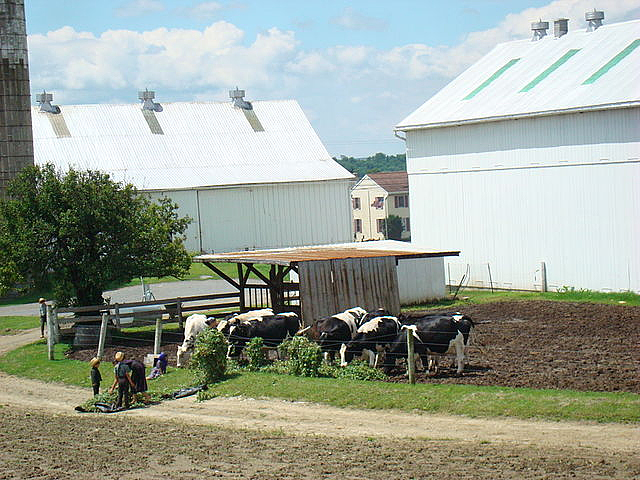An informal association of farmers along Mill Creek in Pennsylvania’s Lancaster County is promoting changes on their properties that are helping improve water quality in the stream. An article published on August 29 in the Bay Journal describes the work of the Mill Creek Preservation Association, most of whose members are Amish. It nicely supplements a different article from 2018 in the same journal that lauded other Amish in Lancaster County and their work to protect the environment.

The seasonal newsletters from the Mill Creek association are mailed to 440 people but there are really only six working core members, five of whom are Amish. The group has no formal membership and it collects no dues. No government agencies run the association—it is a group of neighbors, many of whom happen to be Amish, taking action to preserve their stream.
Their tactics are quite straightforward. The active members walk along the lanes of neighbors whose farmland borders the creek. They point out to the landowners obvious erosion problems on their ground and in their streambanks; they urge them to consider measures to keep their cows out of the stream. Would they consider implementing cost-free restoration work of the stream and fencing off narrow strips of pasture or field to help protect the watershed?

The group has been working at this for 15 years, making slow but steady progress. Counting only streamside projects on which the Lancaster County Conservation District has become involved, the group has helped restore 5.5 miles of Mill Creek to its pre-cow health. Mill Creek is an important tributary to the Conestoga River and ultimately to the Susquehanna River and the Chesapeake Bay.
John Smucker, the only non-Amish active member of the group and a local farmer and businessman himself, emphasized the importance of keeping government agencies peripheral to the major thrust of the association. “The government would not have been able to come in and do this. Nobody would have opened up,” he told the reporter. Many Amish have a stand-offish attitude toward government agencies. Instead, working together as community members seems to work, at least for this group in Lancaster County.

The Bay Journal quoted Jeff Swinehart of the Lancaster Farmland Trust about that issue. He emphasized to the reporter that while the Amish in the county prize their isolation from the government, they are quite willing to work with their fellow farmers and neighbors with whom they worship during their church services. “They can develop that dialogue with their peers to really encourage them to make a change,” he said. “It’s a great demonstration of community conservation.”
The magazine also spoke with some of the active Amish in the group who were willing to be quoted. Henry Beiler said that he now realizes how much people downstream are affected by what he does.
Henry Esh also sees his farming differently than he used to. He allowed stream banks to be leveled so that floodwaters could more easily overflow onto the flood plain on his farm. He dreams that he may someday be able to catch trout in the newly-improved stream. He takes the temperature of the stream near tributaries fed by nearby springs in hopes that cold-water native fish may begin to survive the heat of summer.

Mr. Esh is pleased that the water in the steam is much cleaner now—it is well filtered before it reaches the creek. The improvements in the stream flowing through his farm have convinced him to join the group walking down farm lanes to talk with neighbors.
This article in the Bay Journal goes on to describe the beginnings of the group in 2004, some of its major achievements, partnership projects with other groups, grants from government agencies, educational efforts such as their annual fishing derbies, and other outreach projects.
Matt Koffroth, a watershed specialist with the Lancaster County Conservation District, summarized the worthwhile work of the Mill Creek Preservation Association. He emphasized that they are the people who are interacting with the farmers in the creek watershed. They are the people who are contacting landowners. Their efforts allow the conservation district and other agencies to move forward with protecting the stream.